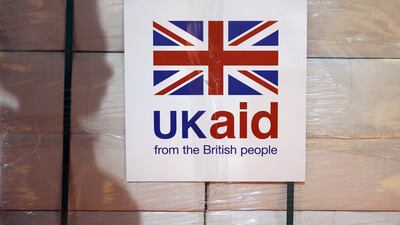In the years leading up to his winning the Nobel Prize in economics in 2015, Princeton professor Angus Deaton made a rather provocative argument: that the billions of dollars the rich world spends on foreign aid simply do not work. The way aid is given, he suggested, makes incompetent governments on the receiving end less accountable for their mistakes and encourages dependency. Cash injections often fail to address the more fundamental problems developing nations face, like poisonous politics and weak institutions – an argument also made prominently by economists Daron Acemoglu and James Robinson, winners of this year’s Nobel Prize.
For aid sceptics, the proof is in the pudding; the global aid industry – in which rich countries channel funds to poorer ones, often with international organisations, NGOs and private contractors functioning as intermediaries – has been up and running since the 1960s, and yet the map of the developing world has not changed much since then. Some aid-dependent economies have hardly grown at all.
Aid’s defenders point to many studies showing, by and large, a positive relationship between international assistance and economic growth, although most find that for every 1 per cent of national income a country receives in aid, real annual growth per person is usually a fraction of a per cent. That may not seem like good value for money, but in the poorest countries even tiny increments of growth can be life-changing. And in any case, there is a distinction to be drawn between development aid – usually targeted towards infrastructure and growth – and health interventions or humanitarian assistance, which focus on saving lives in the shorter term. Even critics tend not to have a problem with the latter, but they together account for a little under a third of global giving.
Nonetheless, the aid sector is braced for a crunch. The UK and Germany, two of the four biggest aid donors by volume, announced major foreign aid cuts planned for next year’s budgets. The election of Donald Trump in America, the world’s biggest donor by volume, looks likely to tighten the belt further. And while overall aid volumes across the OECD club of rich countries last year were at an all-time high of $223.7 billion, $20 billion of this was aid to Ukraine and $31 billion was directed to dealing with refugee crises within their own borders. The latter seems like spending money to treat a symptom more than the disease, as most refugees flee countries where donor attention was traditionally focused.

The poorest countries have, in fact, seen their foreign aid squeezed harder than ever. Twenty years ago, the 72 poorest countries together received an amount of aid equivalent to 40 per cent of their national spending. Today, the figure is a little over 10 per cent.
However wasteful foreign aid might seem to critics, this is a problem. The developing world remains a long way from “catching up” to the developed one by sheer gumption alone. Meanwhile, progress has slid dramatically in the past decade; declines in poverty seen from 1995 to 2015 have since flattened, as have improvements in rates of infectious disease, child mortality and school attendance. While the relationship between aid and long-term economic growth appears murky, there is little doubt that millions, if not billions, of people could benefit from help in the here and now.
Some nations continue to give aid high priority, as shown by President Sheikh Mohamed’s decision to establish Erth Zayed Philanthropies last month, to enhance the efficiency, impact and reach of the country’s philanthropic endeavours. But it is also incumbent on the aid sector to make giving more attractive and efficient. Big overheads and salaries are the norm in the aid business, and the industry-standard “monitoring and evaluation” process often takes months or years to uncover project failures – by which time donors may have already greenlit the project’s next phase.
Another Nobel laureate economist, Esther Duflo, who has warned that foreign aid is “at risk of becoming irrelevant”, has suggested focusing aid budgets on a combination of emergency humanitarian response and less ambitious, but perhaps more pivotal, interventions that are better proven to yield results. Ms Duflo received her Nobel for work promoting the use of randomised controlled trials to assess aid projects’ effectiveness.
While it is true – as some of the world’s greatest economic minds have pointed out – that there are many problems with the way the aid works, a less generous world is not the solution. A world that gives more effectively is.


